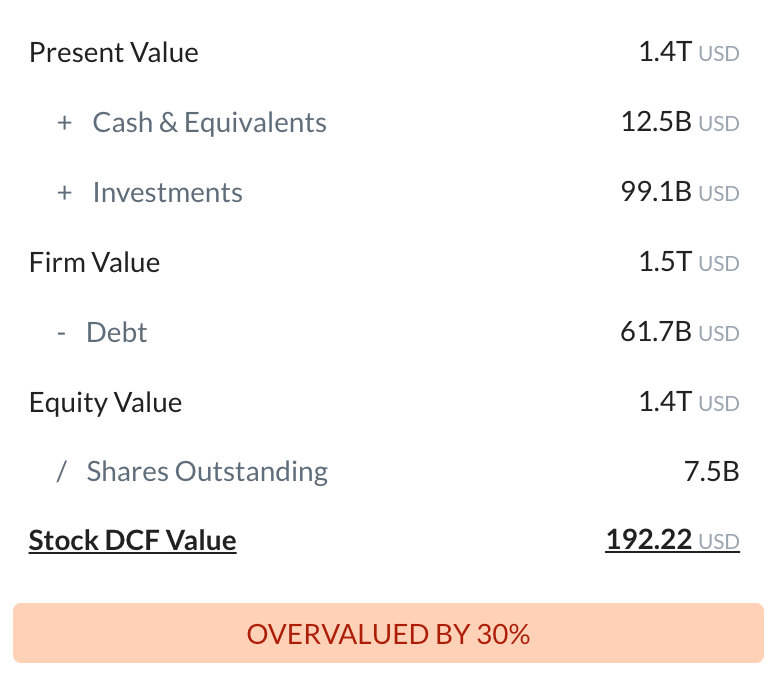
Commonwealth Bank of Australia
ASX:CBA

Intrinsic Value
The intrinsic value of one
 CBA
stock under the Base Case scenario is
98.95
AUD.
Compared to the current market price of 144.09 AUD,
Commonwealth Bank of Australia
is
Overvalued by 31%.
CBA
stock under the Base Case scenario is
98.95
AUD.
Compared to the current market price of 144.09 AUD,
Commonwealth Bank of Australia
is
Overvalued by 31%.
The Intrinsic Value is calculated as the average of DCF and Relative values:

Valuation History
Commonwealth Bank of Australia

Fundamental Analysis

Heavily weighted toward residential mortgage lending in Australia, making the bank’s long-term growth vulnerable to a potential housing market downturn and heightened regulatory scrutiny of mortgage lending practices.
Its leading market share in Australian retail banking, combined with a strong brand and superior distribution network, positions Commonwealth Bank to capture profitable customers and maintain pricing advantages.

Balance Sheet Decomposition
Commonwealth Bank of Australia

| Net Loans | 963.1B |
| Investments | 217.4B |
| PP&E | 3.6B |
| Intangibles | 7.8B |
| Other Assets | 116.6B |
Wall St
Price Targets
CBA Price Targets Summary
Commonwealth Bank of Australia

According to Wall Street analysts, the average 1-year price target for
 CBA
is 112.83 AUD
with a low forecast of 88.88 AUD and a high forecast of 149.1 AUD.
CBA
is 112.83 AUD
with a low forecast of 88.88 AUD and a high forecast of 149.1 AUD.
Dividends
Current shareholder yield for  CBA is
.
CBA is
.
Shareholder yield represents the total return a company provides to its shareholders, calculated as the sum of dividend yield, buyback yield, and debt paydown yield. What is shareholder yield?
The intrinsic value of one
 CBA
stock under the Base Case scenario is
98.95
AUD.
CBA
stock under the Base Case scenario is
98.95
AUD.
Compared to the current market price of 144.09 AUD,
 Commonwealth Bank of Australia
is
Overvalued by 31%.
Commonwealth Bank of Australia
is
Overvalued by 31%.






















































 You don't have any saved screeners yet
You don't have any saved screeners yet